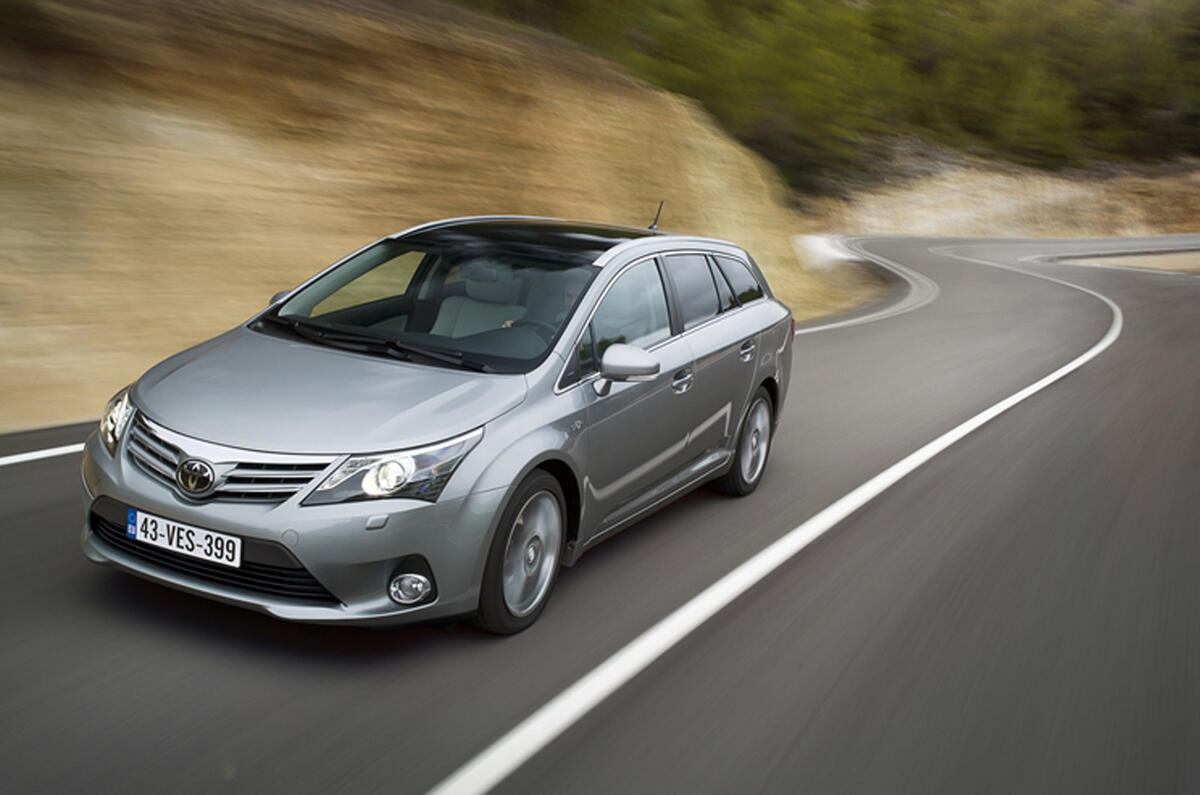What is it?
Despite only appearing in 2008, the current Toyota Avensis was arguably in dire need of a mid-life makeover. Toyota’s workhorse has slipped briskly down the pecking order in the last couple of years as its competition drastically improved on the stock saloon and estate formula.
That fact has not escaped the world’s biggest manufacturer. In an effort to return its British-built car to the head of the D-segment, Toyota’s European division has treated the Avensis to a wide range of detailed changes, including the introduction of a new design direction – dubbed ‘keen look’ – which is tipped to reappear in future EU-developed models.
Inside, the refresh introduces plusher trim materials, a better standard equipment (including the company’s new Touch and Go satnav and infotainment system) and improved insulation. Underneath, Toyota Europe has had to work within the constraints of the existing hardware – a thicker rear anti-roll bar and a revised steering gear ratio are the exceptions – but it insists that increased rigidity, underfloor aerodynamic improvements and a retuned suspension system help it to deliver better dynamics and comfort.
Perhaps the most significant modification occurs in the engine bay where the best-selling 2.0-litre D4-D has received a number of tweaks including a new turbocharger that delivers the same 228lb ft as before, but at lower revs. More importantly – particularly for business users – is the news that four-cylinder unit is now capable of a Passat Bluemotion-rivalling 61.4mpg and CO2 emissions of 119g/km (120g/km for the estate model tested here).
What’s it like?
Still disappointingly off the pace. Clearly this wide-ranging facelift had limited room for maneouver in terms of implementing substantial alterations, but the result is an insubstantial enhancement which proves unsuccessful in its bid to lift the Avensis much beyond its lowly standing.
Styling adjustments to the grille, bumper and headlights are actually moderately successful in a subtle way, and the car remains well-proportioned (particularly as a wagon), but its rear is as anonymous as charity shop window and in clear need of a rethink which goes beyond adding chrome-effect trim to the number plate.
The underwhelming theme continues inside, where the 6.1-inch screen of the new Touch and Go system (standard on the mid-spec TR version we drove) adds a bit of technological panache to the muted centre console, but ultimately metallic flourishes on the air vents and soft touch fascia on the dashboard fail to transform a fundamentally stale cabin into a truly inviting one.
Toyota’s mechanical endeavor hasn’t rendered much of a dynamic boost either. Attempts to alleviate the Avensis’s poor body control have resulted in a stiffer sense of composure, particularly at the rear end, but the car’s benign, predictable handling still struggles to generate an enduring sense of agility or directness - even with a marginally quicker, more fluid steering rack.
The torpor is not helped by the updated diesel engine. It’s new economy figures are an admirable effort, but they are intangible elements that pale into insignificance when confronted with the Avensis’s patent power deficiency. Although 62mph may appear in a fairly conventional 10 seconds, the car struggles to deliver enough of the easy-to-live-with mid-range thrust that diesel buyers have become accustomed to, and its guttural presence under load will only sound reasonable to return buyers subjected to the previous incarnation, which was about as refined as trench warfare.











Join the debate
Add your comment
Re: Toyota Avensis Tourer 2.0 D-4D TR
It has good emissions and MPG, being a toyota it will most likely be bomb proof to, i do think autocar is being slightly harsh on the handling side, its not really designed to be a B road basher is it? If its well priced and pleasent to drive then i cant see any problems with it.
Re: Toyota Avensis Tourer 2.0 D-4D TR
Re: Toyota Avensis Tourer 2.0 D-4D TR
Not only better built, but better built by some considerable margin.
VW built quality? Well I've had a Golf for 4 years and I've just bought another. Don't get me wrong it's a well built car but if my mk5 is anything to go by there are signs of cost cutting. The Mk6 may look better built, but I suspect it's the same underneath. Time will tell. You might not see where VW have cut costs, but you'll sure hear where. The days of mk4 Golf and the Passat of that era (built like tanks) have long gone.
The 508 is French - I'll say no more
The reason I say this is because what you see on the outside isn't the sum of a car's built quality. I used to install ICE and it's only when you start to dismantle fixtures, remove trim etc and see what goes on that you appreciate how well a car is put together. It becomes even more apparent when you try and put the car back together again! It's very easy to see why Toyota (and most of the Japanese cars) are so reliable - try opening up a wiring loom for instance and tapping in to a cable. If you do the job properly / neatly it can be a nightmare just getting through the sheath. French cars? Well it's very easy to see why reliability isn't their forte - some awful cost cutting goes on. Remove / replace a piece of trim on that Peugeot a couple of times and you'll see what I mean.